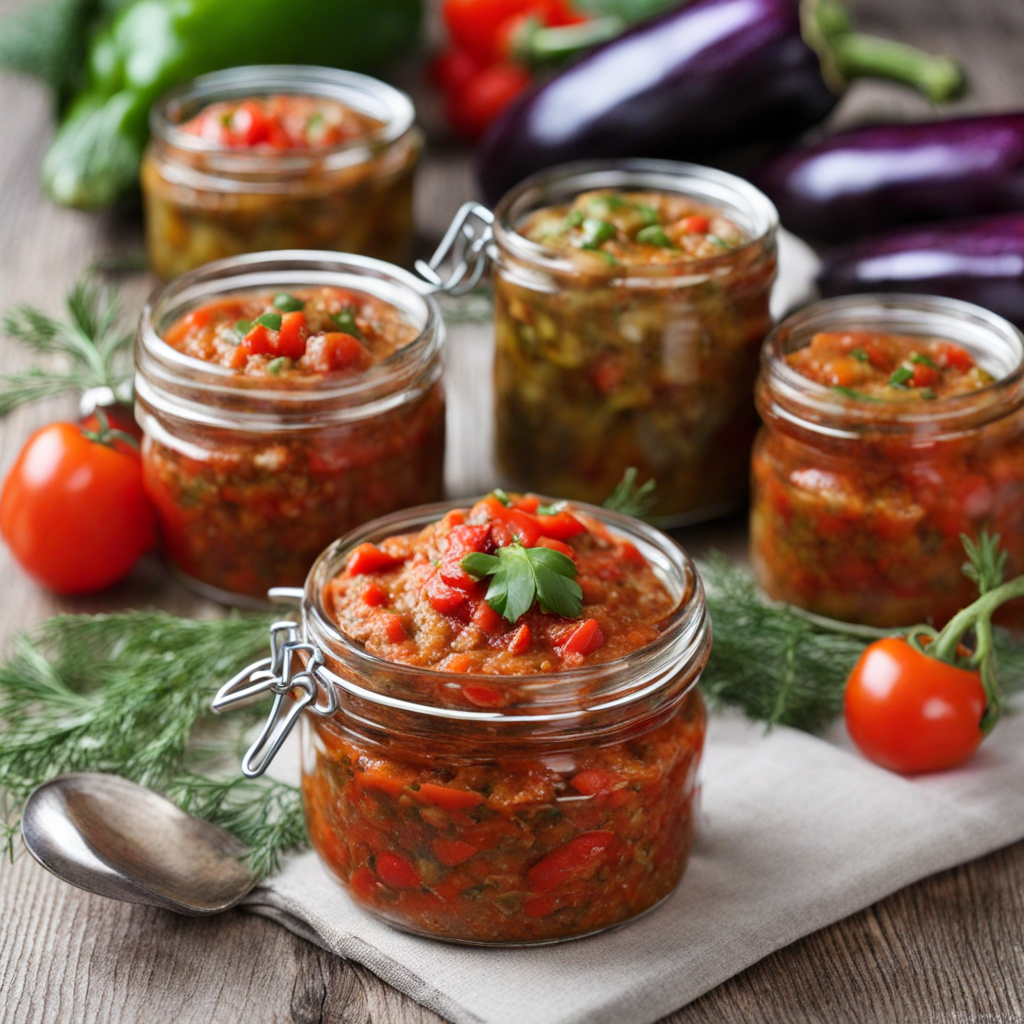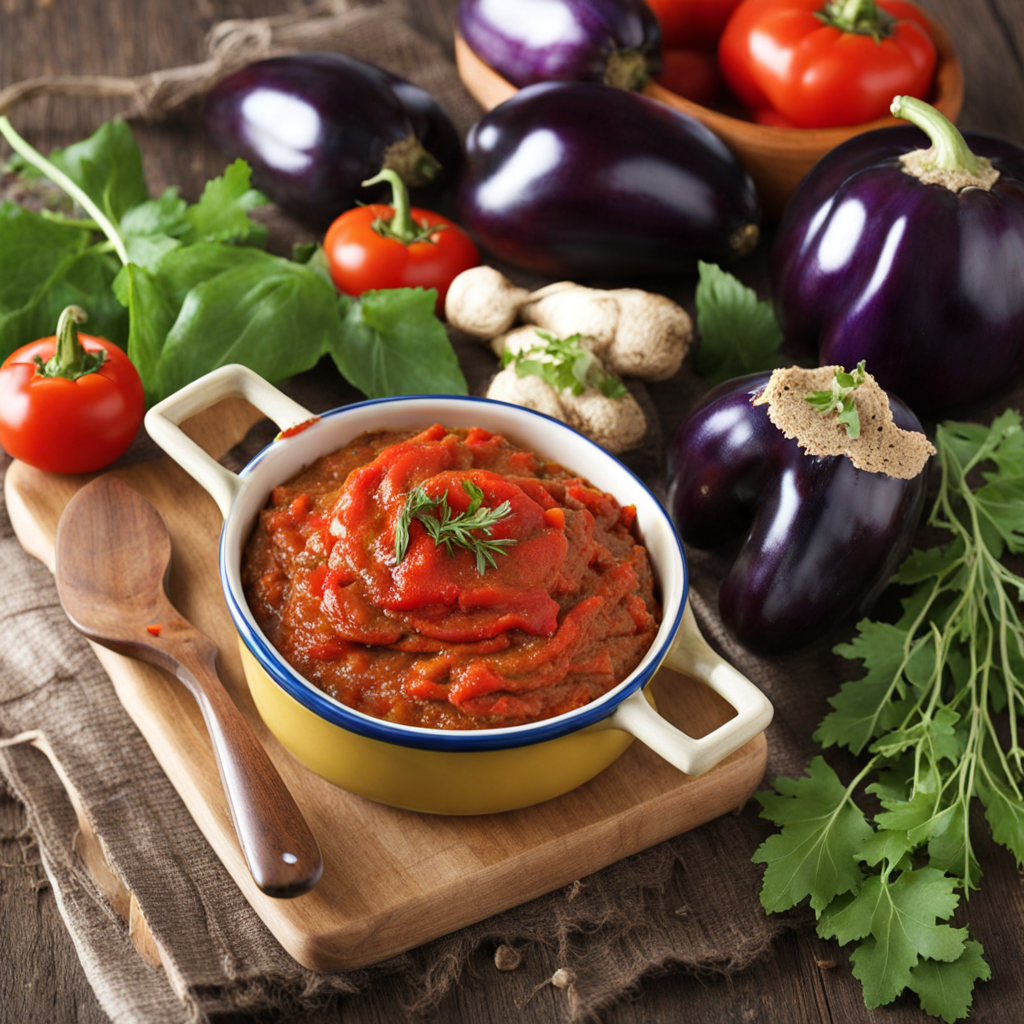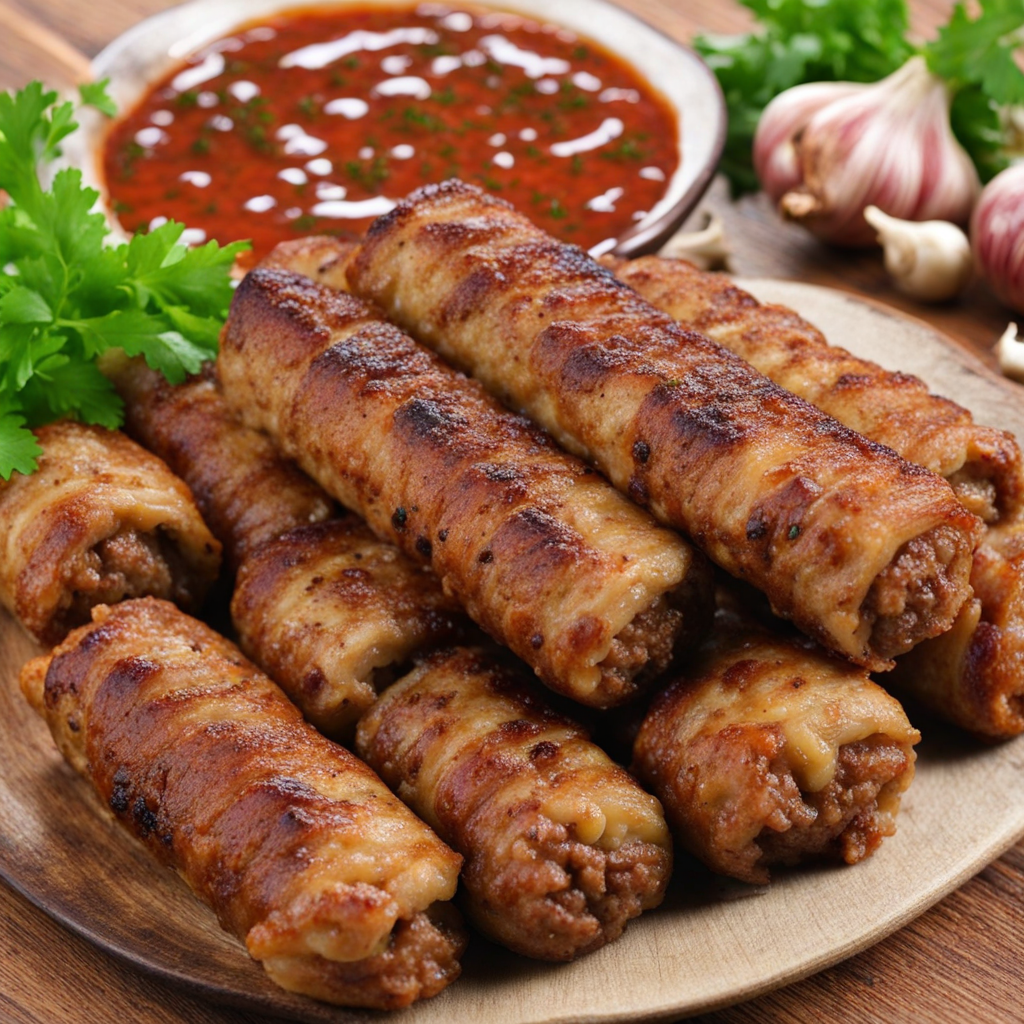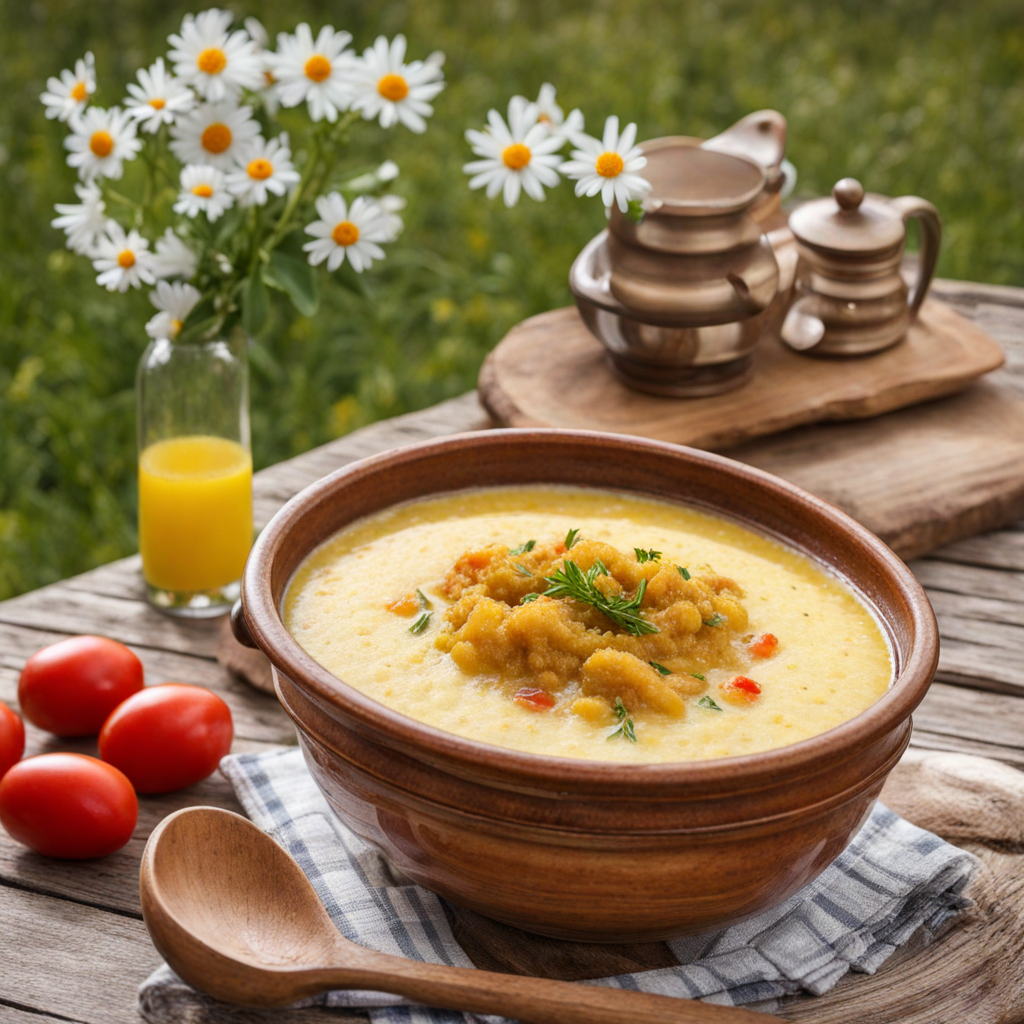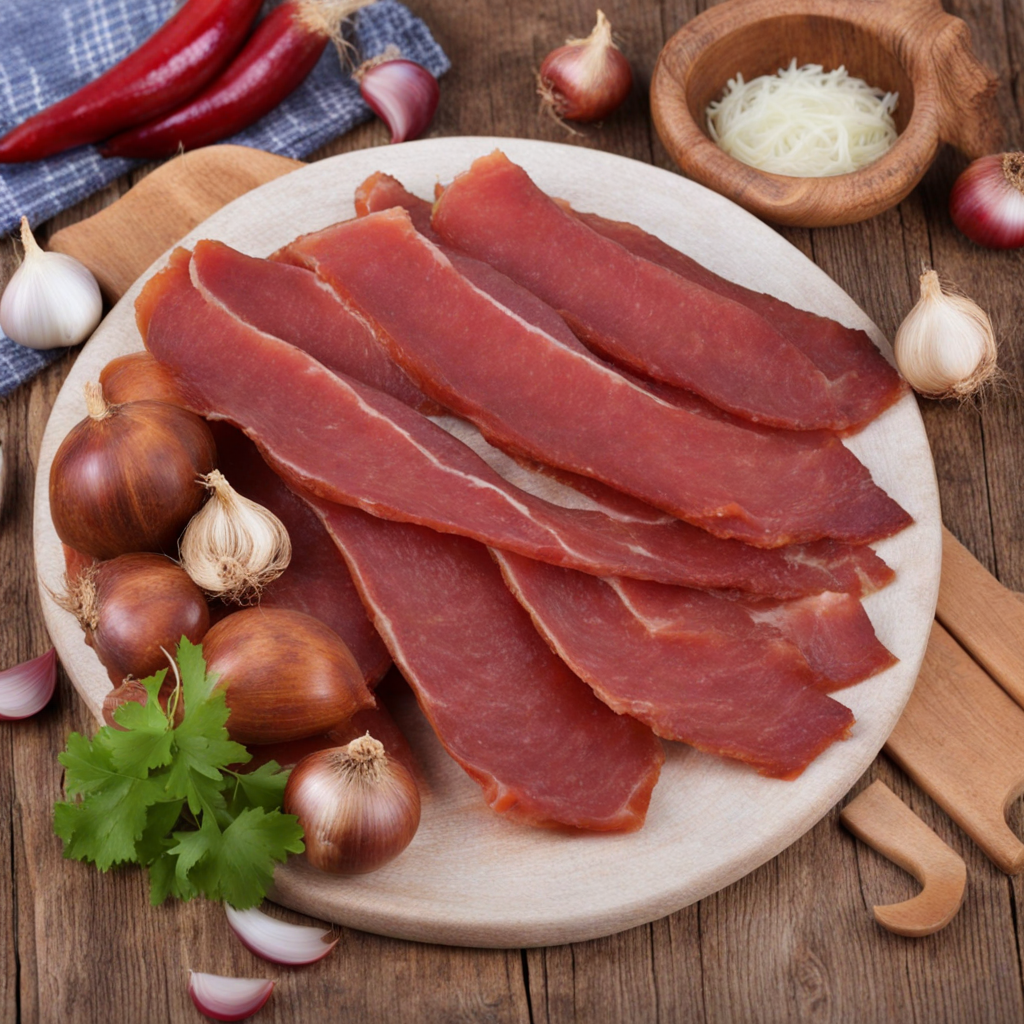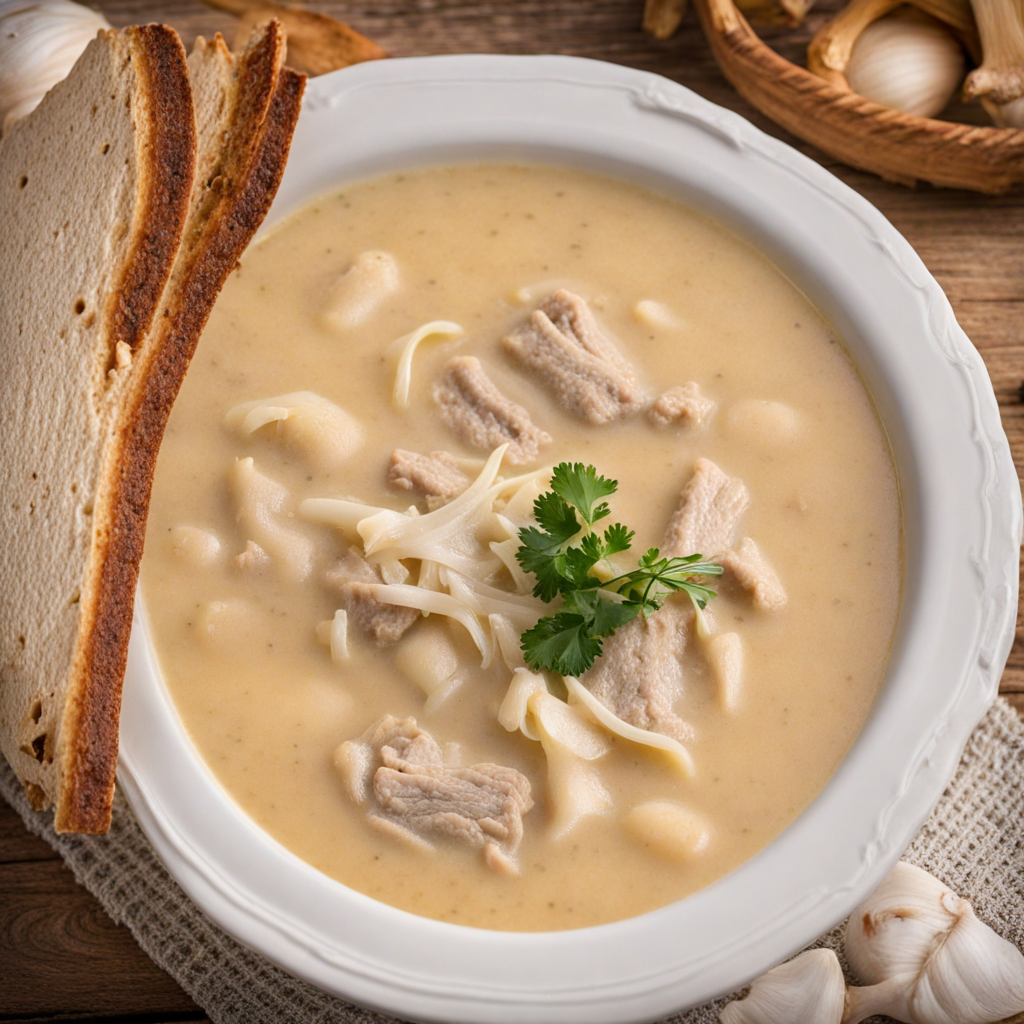Vegetable Spread
Vegetable Spread, known as "Zacuscă" in Romania, is a rich and flavorful dish that embodies the essence of Romanian cuisine. This delightful spread is typically made from a medley of roasted vegetables, including eggplant, bell peppers, tomatoes, and onions, which are slowly cooked to create a harmonious blend of flavors. The roasting process intensifies the sweetness of the vegetables, imparting a smoky undertone that elevates the overall taste. Often seasoned with herbs like thyme and bay leaves, Zacuscă is not only a treat for the palate but also a celebration of seasonal produce, making it a staple during the autumn harvest. The texture of Vegetable Spread is smooth and creamy, making it a versatile accompaniment for a variety of dishes. It can be enjoyed on fresh crusty bread, served as a dip for crackers, or even used as a condiment to enhance grilled meats and vegetables. The vibrant colors of the spread—ranging from deep reds to rich purples—make it visually appealing, inviting you to indulge in its lusciousness. Each bite brings forth a medley of tastes, where the earthiness of the roasted vegetables mingles with the tanginess of tomatoes, creating a delightful contrast that keeps the palate intrigued. In Romanian culture, Zacuscă is often prepared in large batches and preserved in jars, allowing families to enjoy this delectable spread throughout the year. It is a symbol of hospitality, frequently served at gatherings and celebrations. When you dip into a jar of Vegetable Spread, you are not just savoring a delicious dish; you are partaking in a tradition that spans generations, connecting you to the rich heritage of Romania while introducing you to a new and exciting flavor profile that is both comforting and invigorating.
How It Became This Dish
Zacuscă: A Culinary Treasure of Romania Zacuscă, a rich and flavorful vegetable spread, is a beloved staple in Romanian cuisine, often enjoyed on crusty bread or as a condiment accompanying various dishes. Its origins are deeply rooted in the agricultural practices of Eastern Europe, and its cultural significance transcends mere taste, embodying the essence of community, tradition, and sustainability. Origins and Early History The etymology of the word "zacuscă" is believed to derive from the Slavic term "zakuska," which translates to "to nibble" or "to snack." This term traditionally referred to a starter or appetizer served before a meal, suggesting that zacuscă was originally intended as a simple, rustic dish meant to whet the appetite. The spread's primary ingredients—eggplants, bell peppers, tomatoes, and onions—are staples in Romanian gardens, which hints at its early development as a means of preserving the summer harvest. Zacuscă's roots can be traced back to the peasant communities of Romania, where preserving seasonal produce was essential for surviving the long winters. The practice of canning and preserving food has a long history in Eastern Europe, and zacuscă likely evolved as a way to make the most of the bountiful harvests during the late summer and autumn months. Villagers would prepare large batches of the spread using a variety of vegetables, often using family recipes that had been passed down through generations. Cultural Significance Beyond its delicious taste, zacuscă holds significant cultural importance in Romania. It represents the heart of home-cooked meals and the values of sharing and hospitality. In Romanian households, preparing zacuscă is often a communal activity. Families gather to chop vegetables, stir pots, and share stories, reinforcing bonds and traditions. This communal preparation reflects the broader Romanian ethos of togetherness and the importance of food in social interactions. Zacuscă is typically made in the fall, coinciding with the harvest season. It is common for families to prepare large quantities, as the spread is often gifted to friends and relatives. This tradition of sharing embodies the spirit of generosity and reinforces social ties within communities. In many Romanian homes, a jar of zacuscă is a welcome gift, symbolizing thoughtfulness and care. The dish also plays a role in seasonal celebrations and holidays. In many regions, it is served during Christmas and Easter meals, complementing various traditional dishes. It is not uncommon to find zacuscă on the table during family gatherings or festive occasions, serving as a reminder of the importance of family, heritage, and the changing seasons. Development Over Time As Romania underwent political and social changes throughout the 20th century, so too did the preparation and consumption of zacuscă. The spread remained a staple of rural life, but urbanization and industrialization introduced new dynamics to food production and consumption. During the communist era, traditional practices were often overshadowed by a push for modernization, yet zacuscă endured as a symbol of national identity. In the late 20th and early 21st centuries, the re-emergence of interest in traditional foodways saw a renaissance of zacuscă. With the rise of the slow food movement and a growing appreciation for local and artisanal products, many Romanians began to revive the practice of making zacuscă at home. Farmers' markets and local food festivals celebrated this heritage dish, allowing new generations to connect with their culinary roots. Modern interpretations of zacuscă have also emerged, with chefs experimenting with new ingredients and techniques. While the classic recipe remains a cherished favorite, variations incorporating spices, fruits, and unique flavor combinations reflect the evolving palate of contemporary diners. Some chefs have even begun to use zacuscă as a gourmet ingredient, pairing it with artisanal cheeses or featuring it in upscale tasting menus. The Recipe: A Culinary Canvas The traditional recipe for zacuscă is quite straightforward, yet it allows for endless creativity. The base ingredients typically include roasted eggplants and bell peppers, which are combined with sautéed onions, tomatoes, and a selection of spices such as bay leaves, black pepper, and salt. The vegetables are slow-cooked together to develop a rich, smoky flavor, and the mixture is then preserved in jars for future enjoyment. Eggplants, often roasted over an open flame, impart a deep, smoky quality to the spread. Bell peppers add sweetness, while tomatoes provide acidity and depth. The choice of additional ingredients can vary widely depending on regional preferences and family traditions, with some recipes including carrots, zucchini, or even mushrooms. Conclusion Zacuscă is more than just a dish; it is a vibrant tapestry of Romanian culture, history, and community. From its humble beginnings as a means of preserving the bounty of the harvest to its status as a cherished cultural icon, zacuscă embodies the spirit of resilience and the importance of culinary heritage in Romania. As it continues to evolve and adapt to modern tastes, it serves as a delicious reminder of the past while forging connections among generations and communities. In a world increasingly focused on fast-paced living and convenience foods, the act of preparing and sharing zacuscă invites us to slow down, appreciate the simple pleasures of life, and celebrate the rich tapestry of flavors and traditions that define our identities. Whether enjoyed in the company of loved ones or savored alone, zacuscă remains a timeless symbol of Romanian hospitality and culinary artistry.
You may like
Discover local flavors from Romania


